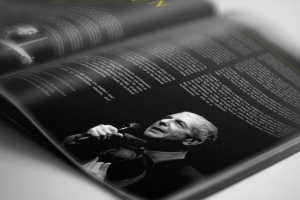02
Grayscale
The Grayscale Guide
Light & Shadow
We all confront luminance every night when we go to bed. Whether you realize it or not, when you turn out the lights at night, you cease to see color if the room is dark enough. The old adage that says “all cats are gray in the dark” is absolutely true. Everything is a shade of gray in a dark room. If you see any color at all, it’s because there is light coming from a source of some kind that illuminates the room just enough for your eyes to perceive an object’s color. If you turn out that light, everything becomes a shade of gray. In a room with no light source, everything will appear black because color is imperceptible to the human eye when there is no light. The focus of this guide will be to study light and shadow, and how to master their power.
Table of Contents
- Luminosity
- Light Sources
- The Absence of Light
- How Light Behaves
- Specularity
- Diffusion
- Reflectivity
- Light and Shadow
- The Power of Black and White
- Shades of Gray
- The Absorption of Light
- Brightness
- Black Point & White Point
- Contrast
- Ambience
- Transparency
- Translucence
- Matte vs. Gloss
- Bumpiness & Texture
- The Histogram
- Color Curves
- Masking
- Alpha Channels
- Bending Light
- Exposure
- Tonal Range
What You Will Learn:
The purpose of this guide is to help you understand the raw power of black, white and gray. This goes well beyond their application to photography. When you master the control of light and shadow, you can create a huge variety of complex special effects, like bumpiness and texture, stenciling, double exposures, and most importantly of all, how to mask out certain parts of an image while keeping others so you can apply any effect to predefined areas of an image. Getting a grip on alpha channels and what they can do for you can make short work out of really complex effects. But before you can do any of that, you need to understand how something as simple as black, white and gray can give you so many special effects.
Related Courses
- Levels
- Curves
- Exposure
- Layer Masks
- Vector Masks
- Brightness & Contrast
- Gradients in Black and White









